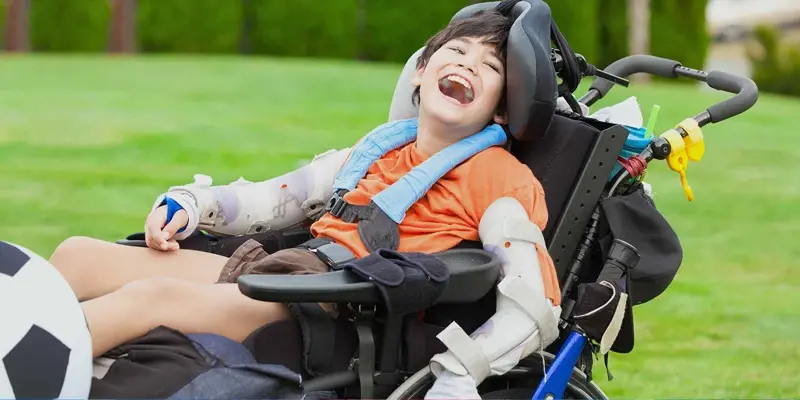-

opening hours
mon-sat 09:00-22:00 -

call us
+ 91 98423 72250
opening hours
mon-sat 09:00-22:00
call us
+ 91 98423 72250

Cerebral palsy (CP) refers to a group of disorders that affect muscle movement and coordination. In many cases, vision, hearing, and sensation are also affected.
CP is the most common cause of motor disabilities in childhood. According to the Centers for Disease Control and Prevention (CDC)Trusted Source, it affects at least 1.5 to 4 out of every 1,000 children worldwide.
The symptoms of CP vary from person-to-person and range from mild to severe. Some people with CP may have difficulty walking and sitting. Other people with CP can have trouble grasping objects.
The symptoms can become more severe or less severe over time. They also vary depending on the part of the brain that was affected.
Some of the more common signs include:
Most children are born with CP, but they may not show signs of a disorder until months or years later. Symptoms usually appear before a child reaches age 3 or 4.
Abnormal brain development or injury to the developing brain can cause CP. The damage affects the part of the brain that controls body movement, coordination, and posture.
The brain damage usually occurs before birth, but it can also happen during birth or the first years of life. In most cases, the exact cause of CP isn’t known. Some of the possible causes include:
An electroencephalogram (EEG) is used to evaluate the electrical activity in the brain. It may be ordered when someone is showing signs of epilepsy, which causes seizures.
An MRI scan uses powerful magnets and radio waves to produce detailed images of the brain. It can identify any abnormalities or injuries in the brain.
A CT scan creates clear, cross-sectional images of the brain. It can also reveal any brain damage.
A cranial ultrasound is a relatively quick and inexpensive method of using high-frequency sound waves to get basic images of the brain in young infants.
A sample of blood may be taken and tested to rule out other possible conditions, such as bleeding disorders.
People with CP may have other problems, such as:
How is cerebral palsy treated?
The goal of treatment is to improve limitations and prevent complications. Treatment may include assistive aids, medications, and surgery.
Assistive aids include:
Oral anticonvulsants and muscle relaxants are commonly used as first-line treatments for CP
Local injections of botulinum toxin type A (Botox) or intrathecal baclofen therapy, where the drug is delivered by an implantable pump.
Orthopedic surgery may be used to relieve pain and improve mobility. It may also be needed to release tight muscles or to correct bone abnormalities caused by spasticity.
Selective dorsal rhizotomy (SDR) might be recommended as a last resort to reduce chronic pain or spasticity. It involves cutting nerves near the base of the spinal column.
Physical therapy is a front-line intervention for cerebral palsy. Individualized PT treatment plans address movement problems common to the disorder. In addition to mobility improvements for cerebral palsy patients, physical therapy offers preventative benefits, reducing the likelihood of complications and disability.
As part of a comprehensive cerebral palsy treatment plan, physical therapy draws from various techniques, including stretching, strengthening and positioning exercises. Therapy goals and activities are customized for each child, promoting greater flexibility, mobility and stability. By preserving and improving overall health and functioning, physical therapy enables children to fully engage in activities of daily life.
SPEECH THERAPY
OCCUPATIONAL THERAPY
RECREATIONAL THERAPY
There’s no cure for CP, but the condition can often be treated and managed effectively. The specific type of treatment varies from person to person. Some people with CP may not need very much assistance, and others might need extensive, long-term care for their symptoms.